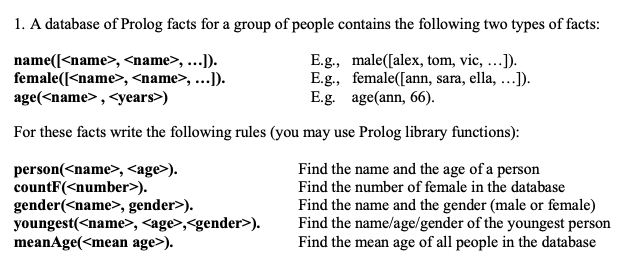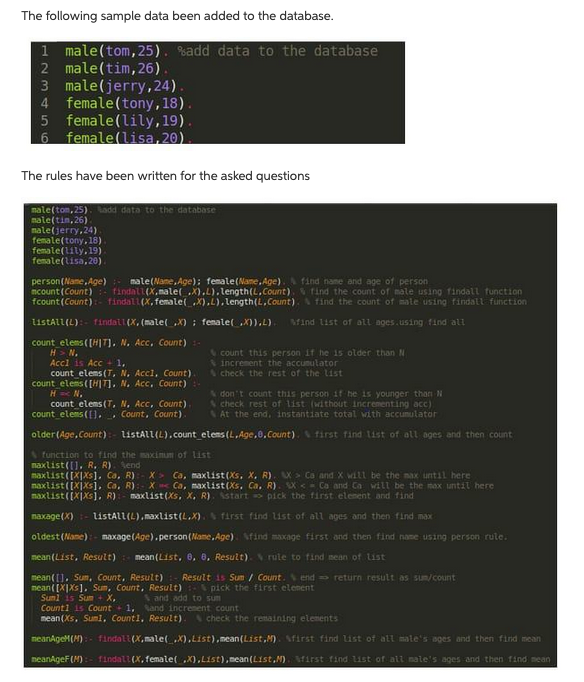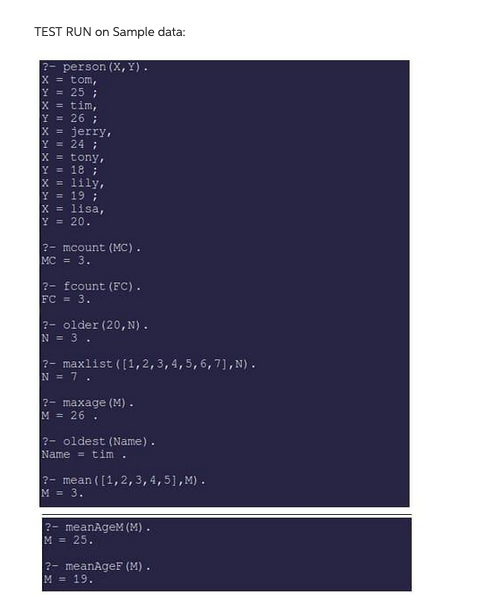Answered step by step
Verified Expert Solution
Question
1 Approved Answer
Hi, Chegg Expert PLEASE DO AS SOON AS POSSIBLE, REALLY URGENT. All the information is provided before, clicking on NEED MORE INFORMATION, FIRST READ,THANKS. Question
Hi, Chegg Expert PLEASE DO AS SOON AS POSSIBLE, REALLY URGENT. All the information is provided before, clicking on NEED MORE INFORMATION, FIRST READ,THANKS.
Question (See Below) - NEEDS TO BE DONE IN PROLOG:

To be Done in Prolog (See Below Example):


1. A database of Prolog facts for a group of people contains the following two types of facts: name([
Step by Step Solution
There are 3 Steps involved in it
Step: 1

Get Instant Access to Expert-Tailored Solutions
See step-by-step solutions with expert insights and AI powered tools for academic success
Step: 2

Step: 3

Ace Your Homework with AI
Get the answers you need in no time with our AI-driven, step-by-step assistance
Get Started


